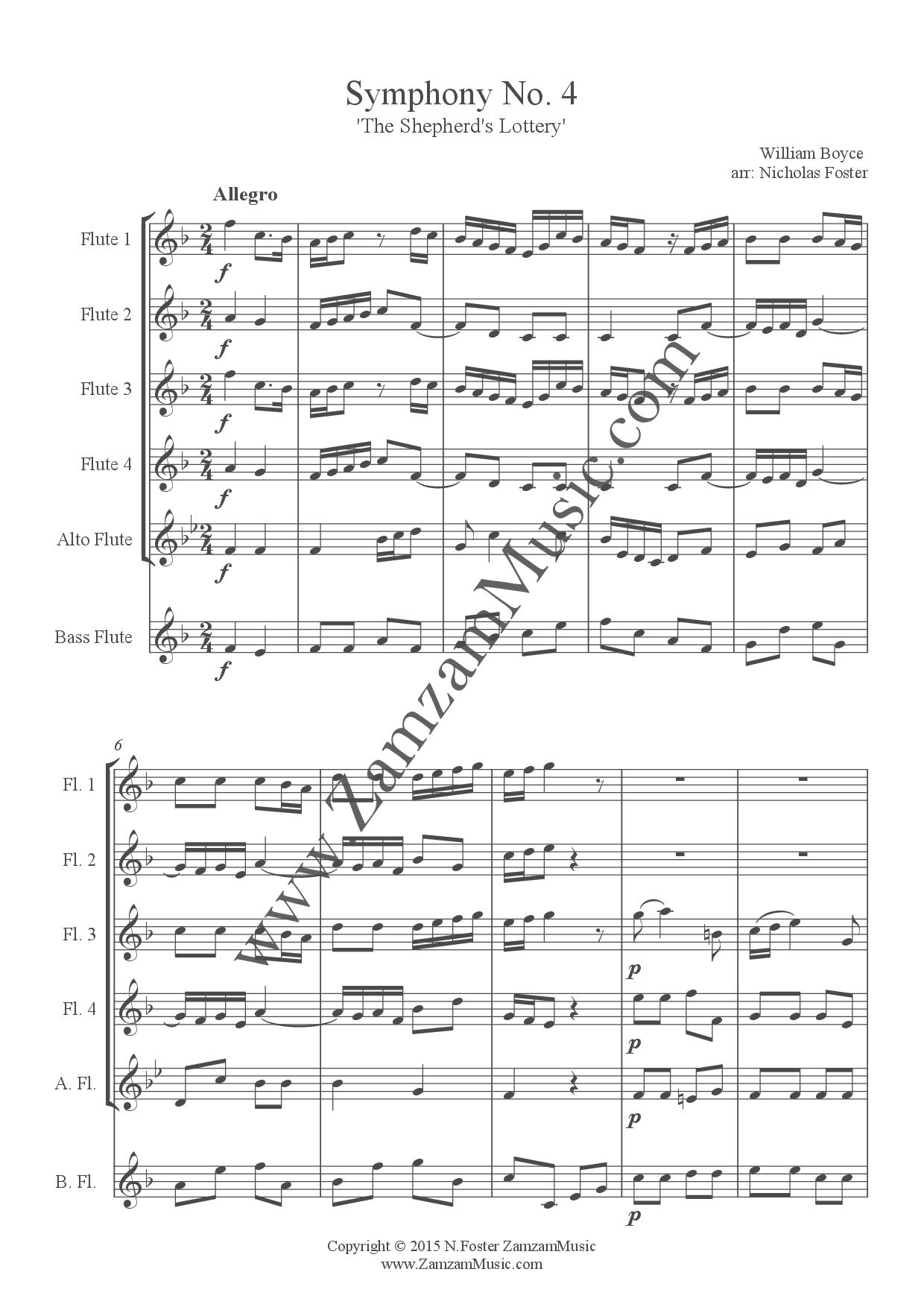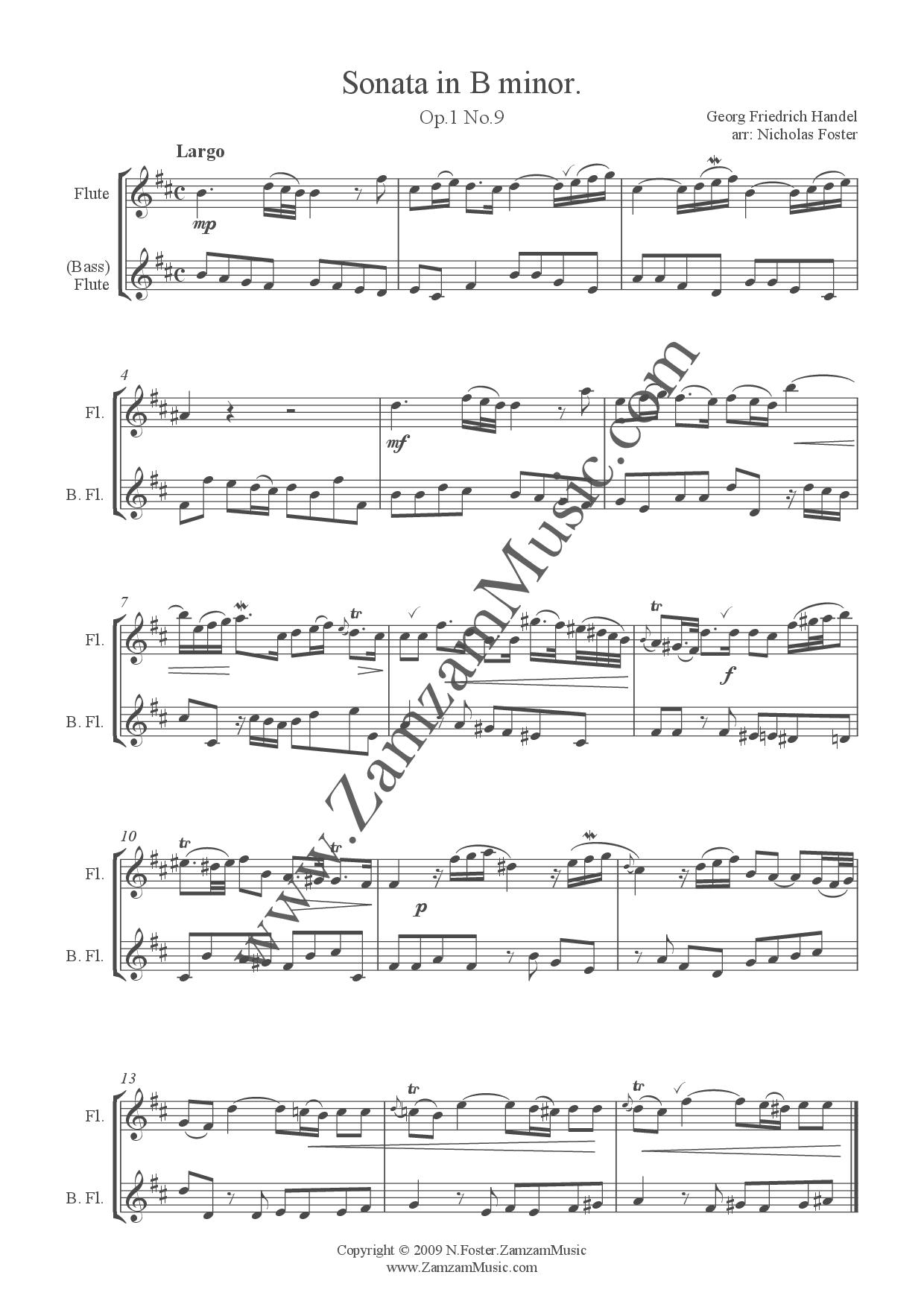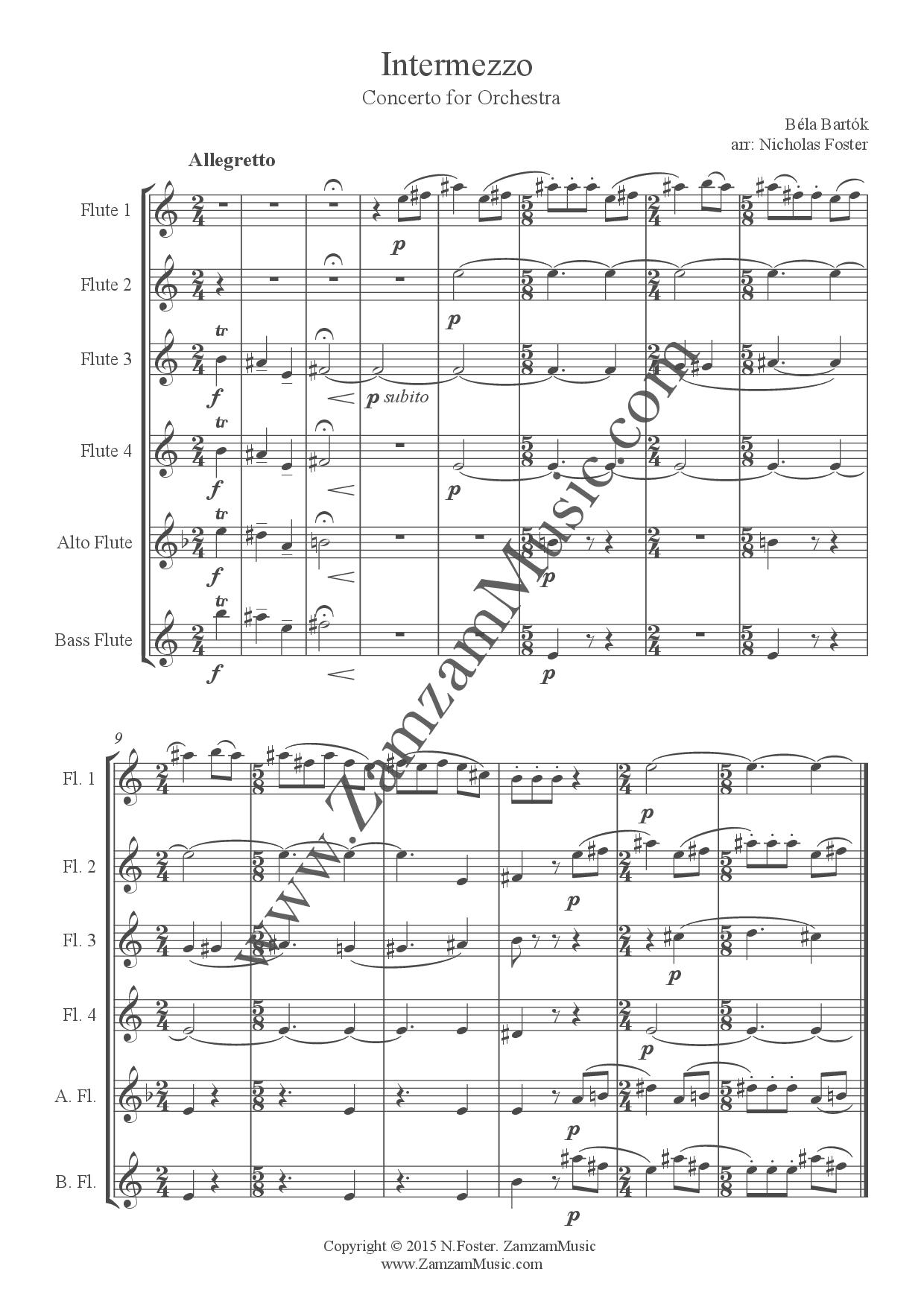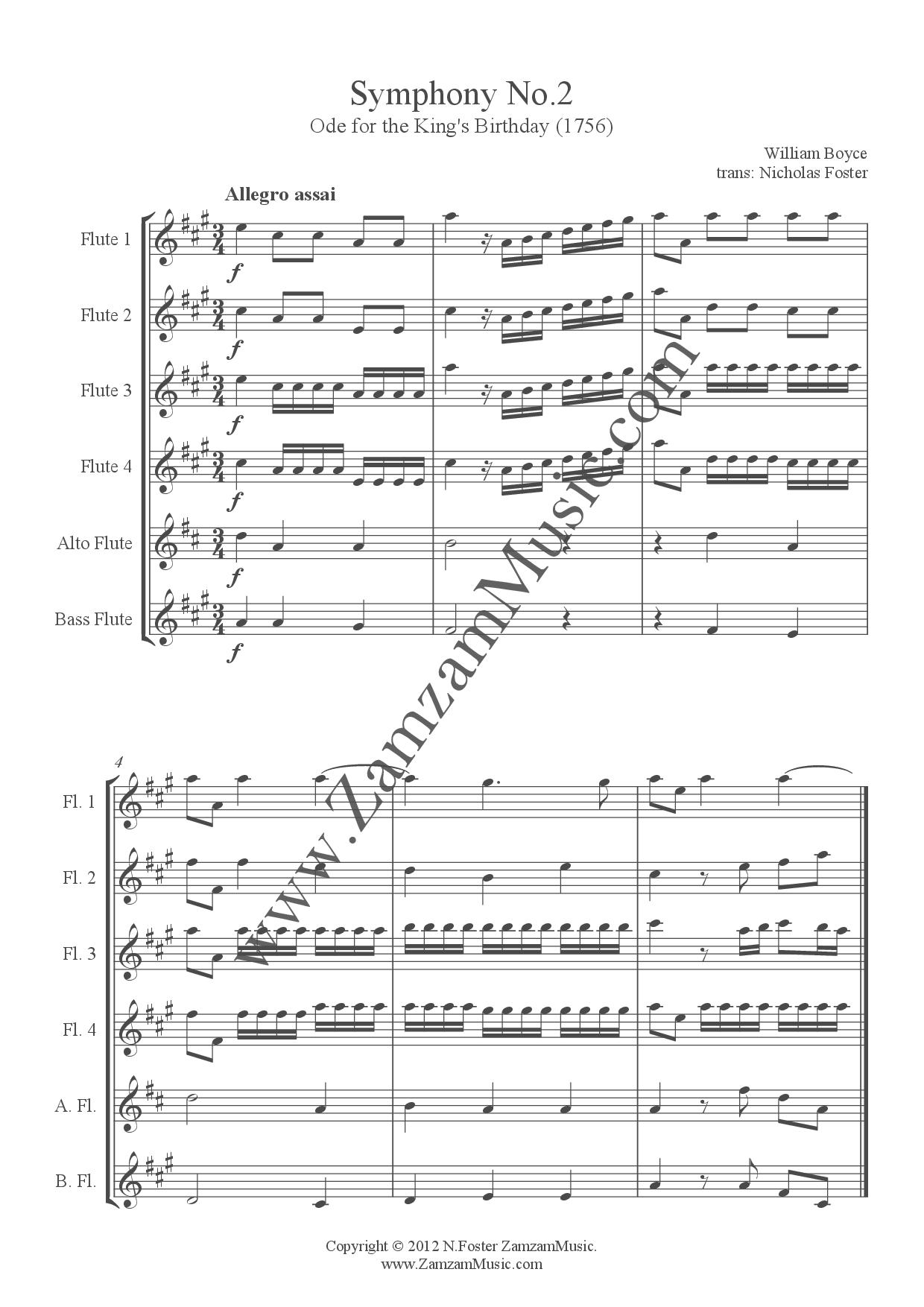Description
Boyce: Symphony No 4. William Boyce’s Symphony No. 4 in F major, Op. 2 No. 4 is a concise and elegant example of mid-18th-century English orchestral music. Composed in 1751, it was originally written as the overture to his opera The Shepherd’s Lottery and later published in 1760 as part of his collection Eight Symphonies in Eight Parts. The symphony consists of three movements: Allegro, Vivace ma non troppo, Allegro. The work is characterised by its bright, rhythmic energy and clear textures, reflecting Boyce’s blend of Baroque and early Classical styles. The outer movements are lively and spirited, while the central movement offers a graceful contrast. Boyce: Symphony No 4 is transcribed here in it’s entirety for 4 flutes, alto and bass flute. Intermediate to advanced playing level required.



